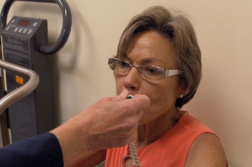ORLANDO, Fla. (Ivanhoe Newswire) — Plastics are everywhere … and popular because of their convenience or cost. But researchers have warned tiny fragments, known as microplastics, can seriously impact your health. Now a new study is showing some of the dangers.
Plastic isn’t just an issue for the environment. It’s a problem for our health too. Studies show microscopic pieces and chemicals such as BPA and phthalates can end up in our body.
Jennifer Adibi, MPH, ScD at University of Pittsburgh School of Public Health says, “So, these chemicals are not bound within the product to something that would make it inert or unable to move out of the product.”
A new study in the New England Journal of Medicine looked at plaque removed from the carotid arteries of 257 people. More than half had measurable levels of microplastics and in checkups in the years to follow, there was a higher risk of heart attack, stroke and death in that group. Microplastics have also been linked to many other health issues. So, what can you do to protect yourself?
Adibi says, “It is about really educating yourself on what the sources are and then what are the alternatives to those products.”
Here are some helpful tips: use glass, ceramics or paper plates in the microwave, not plastic containers.
Buy plastics labeled “BPA free.” And avoid plastics with recycle codes of three or seven – those are sometimes made with BPA.
Doctors say phthalates can sometimes be found in beauty and skin care items. They also recommend avoiding highly processed meals like chicken nuggets and heating up baby formula in glass containers instead of plastic bottles.
Contributors to this news report include: Lindsay Dailey, Producer; Kyle Fisher, Editor, and Videographer.
Sources:
https://www.nejm.org/doi/full/10.1056/NEJMoa2309822
https://www.niehs.nih.gov/health/topics/agents/sya-bpa
PLASTICS ARE EVERYWHERE AND POSE A REAL THREAT TO OUR HEALTH
REPORT #3195
BACKGROUND: Microplastics come about when they break away from larger pieces of plastic over time. They are small and measure less than five millimeters. Some consumer and commercial products that include microplastics are cosmetics, detergents, paints, medicines, and pesticides. Studies have revealed that microplastics have a huge impact on our health and environment and also suggest they can be very detrimental to the organisms they encounter. Scientists say they have discovered microplastics everywhere such as mountains, the ocean, the Arctic Sea ice, in our air, drinking water and bodies.
(Source: https://www.clientearth.org/latest/news/microplastics-what-are-they-and-why-are-they-a-problem/)
HEALTH AND MICROPLASTICS: Microplastics may increase the risk of heart attack and other cardiovascular problems in people who have heart disease according to research. Scientists are finding these plastics in every part of the body including the lungs and stomach. The source of the plastic depends on whether it is contaminated with toxic chemical additives during the production process. Some tips to reduce exposure are to regularly dust and vacuum. You can also avoid drinking from plastic water bottles and keep the bottles out of the heat and in a cool, dry place. Home water filters can be useful when it comes to reducing contaminants. You should avoid plastic cutting boards and microwave your food in glass containers.
NEW RESEARCH IN MICROPLASTIC DETECTION: A new project, out of Queen Mary University of London, is being developed where the focus is on microplastic detection using sensors in aquatic environments. Research has revealed that microplastics contaminate our rivers, lakes, and oceans, and have even been found in the placentas of unborn babies. SaeJune Park, MD, a Lecturer in Terahertz (THz) Electronics and the Head of the THz Laboratory in the Centre for Electronics at the School of Electronic Engineering and Computer Science at Queen Mary University of London, says, “The exciting bit here is using THz metasurfaces, which are the patterned artificial structures that let us customize the properties of microplastic sensors to our will. By measuring these tiny shifts in frequency, we can potentially not only detect microplastics, but potentially even figure out their size and how many there are.” This research is a true advancement in microplastic detection technology and continuing research is being conducted.
* For More Information, Contact: Jennifer Adibi, MPH, Scd
Assistant Prof., Faculty in Epidemiology
University of Pittsburgh School of Public Health
Phone: 412-624-1913
Free weekly e-mail on Medical Breakthroughs from Ivanhoe. To sign up: http://www.ivanhoe.com/ftk



